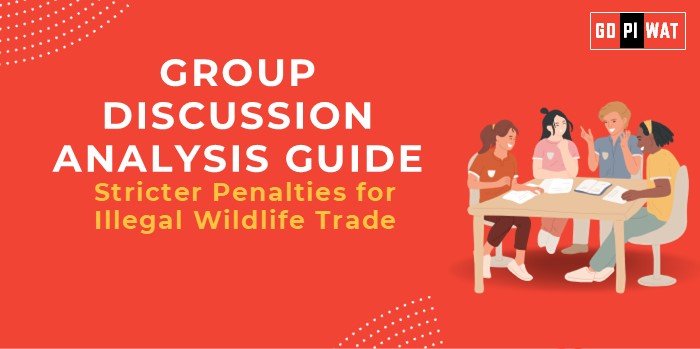🦒 Stricter Penalties for Illegal Wildlife Trade
🌍 Introduction to the Topic
Illegal wildlife trade, a global black market worth billions annually, has devastating consequences for biodiversity, ecosystems, and national economies. With the dual challenges of protecting endangered species and curbing organized crime, stricter penalties could deter offenders while reinforcing global conservation efforts.
📊 Quick Facts and Key Statistics
- Global Value: Estimated at $23 billion annually, making it the fourth largest illegal trade globally.
- Biodiversity Impact: Over 35,000 species are threatened by illegal trade (CITES).
- Enforcement Gaps: Only 26% of wildlife crime cases globally result in convictions (UNODC).
- India’s Wildlife: Home to 7% of the world’s biodiversity, with key species like tigers, pangolins, and elephants under threat.
👥 Stakeholders and Their Roles
- Governments: Implement stricter laws, allocate resources, and lead enforcement.
- International Bodies: Ensure cross-border collaboration through frameworks like CITES.
- Non-Profits: Advocate for stricter policies and support wildlife rehabilitation efforts.
- Communities: Engage in conservation and report illegal activities.
- Criminal Networks: Operate the trade and exploit regulatory loopholes.
🏆 Achievements and Challenges
- Achievements:
- Increased awareness through global campaigns highlighting endangered species.
- Stronger legislation like the Wildlife Protection Act in India and the US Endangered Species Act.
- Tech integration, such as AI and drones, for improved wildlife monitoring.
- Challenges:
- Weak enforcement due to resource constraints and corruption.
- Global coordination issues, as international trade routes complicate monitoring.
- Economic dependence on wildlife trade in some communities.
- Global Comparisons:
- Success: Kenya’s anti-poaching laws reduced elephant poaching by 90%.
- Challenges: Southeast Asia remains a hub for wildlife trafficking due to porous borders.
📌 Structured Arguments for Discussion
- Supporting Stance: “Stricter penalties are vital to deter offenders, as seen in Kenya’s anti-poaching success.”
- Opposing Stance: “Penalties alone are insufficient without addressing root causes like poverty and demand.”
- Balanced Perspective: “While penalties are essential, they must be paired with community development and global collaboration.”
💡 Effective Discussion Approaches
- Opening Approaches:
- Use statistics: “With illegal wildlife trade threatening 35,000 species, can stricter penalties serve as a decisive deterrent?”
- Highlight a case study: “Kenya’s success demonstrates the potential of combining penalties with active enforcement.”
- Counter-Argument Handling:
- Address concerns that penalties may target locals by advocating for tools to focus on top-tier offenders.
📊 Strategic Analysis of Strengths and Weaknesses
- Strengths: Supports biodiversity and aligns with global goals like the UN SDGs.
- Weaknesses: High implementation costs and resistance from affected communities.
- Opportunities: Leverage frameworks like CITES and use technology to track illegal trade.
- Threats: Corruption and lack of political will undermine enforcement.
🎓 Connecting with B-School Applications
- Real-World Applications: Explore wildlife trade’s impact on supply chain management and sustainability.
- Sample Questions:
- “How can stricter penalties align with conservation goals?”
- “Discuss the economic implications of stricter wildlife trade laws.”
- Insights for B-School Students: Addressing wildlife trade inspires solutions in policy innovation and technology integration.


